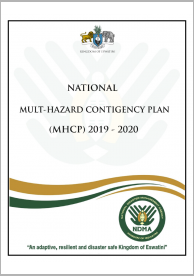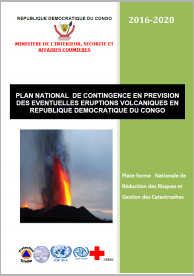
The aim of this report was to highlight existing capacities, challenges and gaps, as well as make recommendations for strengthening national and local capacities regarding DRR (including climate change risks) through key sectors.
The following is a list of all conten labeled as "Civil Society/NGOs"

The aim of this report was to highlight existing capacities, challenges and gaps, as well as make recommendations for strengthening national and local capacities regarding DRR (including climate change risks) through key sectors.

This document presents the results of the project "Assessment of natural risks in the Comoros" which was commissioned in order to analyse and assess the current situation; main challenges and issues; strengths and weaknesses as well as the country's potential needs for external assistance in disaster risk management.

GAR19 provides the first update from countries on progress against the seven targets of the Sendai Framework for Disaster Risk Reduction 2015–2030 (Sendai Framework): the global guide to understanding and dealing with risk, and places special emphasis on the 2020 Target (e) - Substantially increase the number of countries with national and local disaster risk reduction strategies by 2020.

The aim of this report is to support legislators, public administrators, DRR and development practitioners and advocates to prepare and implement effective disaster risk management (DRM) legal frameworks for their country’s needs, drawing on examples and experience from other countries.

The annual Southern African Development Community (SADC) Disaster Risk Reduction (DRR) and Preparedness Planning Workshop took place in Gaborone, Botswana from 05‐08 October 2010, in partnership with UNISDR, the World Bank Global Facility for Disaster Reduction and Recovery (GFDRR) and UNOCHA.

The updated National Multi Hazard Contingency Plan (MHCP) is fundamental for better preparedness at all levels, anticipating potential hazards, response readiness with provision for emergency assistance therefore, minimizes the impact, saves lives and ease sufferings of the affected population.

This document presents the Swaziland Resilience Strategy and Action Plan (SRSAP), which is aimed at making the country safer, adaptive and more resilient to all hazards for all generations.

This policy seeks to provide a well coordinated framework to disaster risk management and disaster risk reduction in Swaziland aligned to national development instruments, regional and international instruments for Disaster Risk Management and Disaster Risk Reduction as well as current and emerging sustainable development challenges such as climate change.

The report presents findings on the assessment of progress and experiences in mainstreaming disaster risk reduction into national development frameworks in Malawi. The assessment was commissioned jointly by the secretariat of the Southern African Development Community (SADC), ECA and UNISDR.

This National Contingency Plan covers the period from 2016-2020 and is specific for the responsible management of a possible volcanic eruption in North Kivu Province whose lives of more than one million (1,000,000) people and the entire ecosystem in Goma and its surroundings are between active volcanoes (Nyiragongo and Nyamulagira) and Lake Kivu, which has a high concentration of gases.